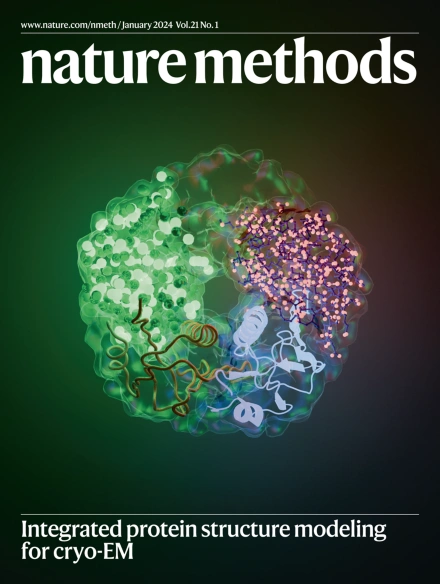A temperature-inducible protein module for control of mammalian cell fate
IF 36.1
1区 生物学
Q1 BIOCHEMICAL RESEARCH METHODS
引用次数: 0
Abstract
Inducible protein switches are currently limited for use in tissues and organisms because common inducers cannot be controlled with precision in space and time in optically dense settings. Here, we introduce a protein that can be reversibly toggled with a small change in temperature, a stimulus that is both penetrant and dynamic. This protein, called Melt (Membrane localization using temperature) oligomerizes and translocates to the plasma membrane when temperature is lowered. We generated a library of Melt variants with switching temperatures ranging from 30 °C to 40 °C, including two that operate at and above 37 °C. Melt was a highly modular actuator of cell function, permitting thermal control over diverse processes including signaling, proteolysis, nuclear shuttling, cytoskeletal rearrangements and cell death. Finally, Melt permitted thermal control of cell death in a mouse model of human cancer. Melt represents a versatile thermogenetic module for straightforward, non-invasive and spatiotemporally defined control of mammalian cells with broad potential for biotechnology and biomedicine. The Melt (Membrane localization using temperature) protein translocates to the plasma membrane upon temperature shift. Melt variants with a range of switching temperatures enable straightforward thermogenetic control of diverse cellular processes.

用于控制哺乳动物细胞命运的温度诱导蛋白模块。
目前,诱导蛋白开关在组织和生物体中的应用受到限制,因为在光密集的环境中,普通诱导剂无法在空间和时间上精确控制。在这里,我们介绍了一种蛋白质,它可以随着温度的微小变化而可逆地切换,这是一种既渗透又动态的刺激。当温度降低时,这种蛋白质被称为Melt(利用温度进行膜定位)寡聚并易位到质膜上。我们生成了一个熔体变体库,其开关温度范围从30°C到40°C,包括两个在37°C及以上工作的变体。熔体是一种高度模块化的细胞功能致动器,允许热控制多种过程,包括信号传导、蛋白质水解、核穿梭、细胞骨架重排和细胞死亡。最后,在人类癌症小鼠模型中,Melt允许热控制细胞死亡。Melt代表了一种通用的热成因模块,用于直接,非侵入性和时空定义的哺乳动物细胞控制,具有广泛的生物技术和生物医学潜力。
本文章由计算机程序翻译,如有差异,请以英文原文为准。
求助全文
约1分钟内获得全文
求助全文
来源期刊

Nature Methods
生物-生化研究方法
CiteScore
58.70
自引率
1.70%
发文量
326
审稿时长
1 months
期刊介绍:
Nature Methods is a monthly journal that focuses on publishing innovative methods and substantial enhancements to fundamental life sciences research techniques. Geared towards a diverse, interdisciplinary readership of researchers in academia and industry engaged in laboratory work, the journal offers new tools for research and emphasizes the immediate practical significance of the featured work. It publishes primary research papers and reviews recent technical and methodological advancements, with a particular interest in primary methods papers relevant to the biological and biomedical sciences. This includes methods rooted in chemistry with practical applications for studying biological problems.
 求助内容:
求助内容: 应助结果提醒方式:
应助结果提醒方式:


